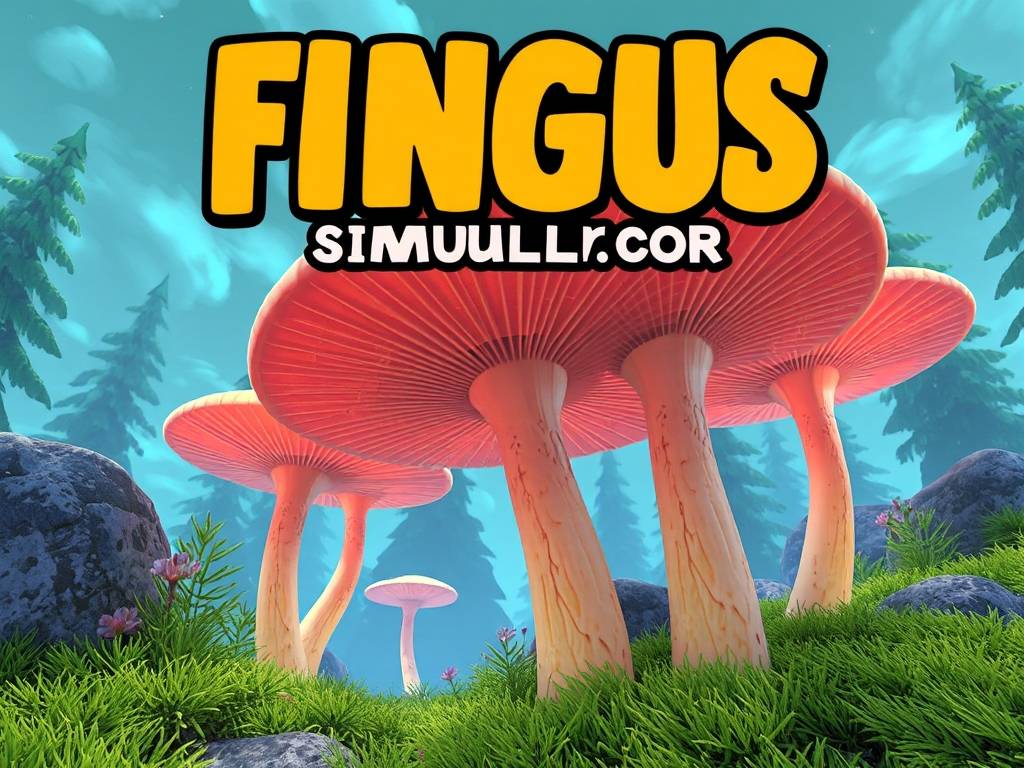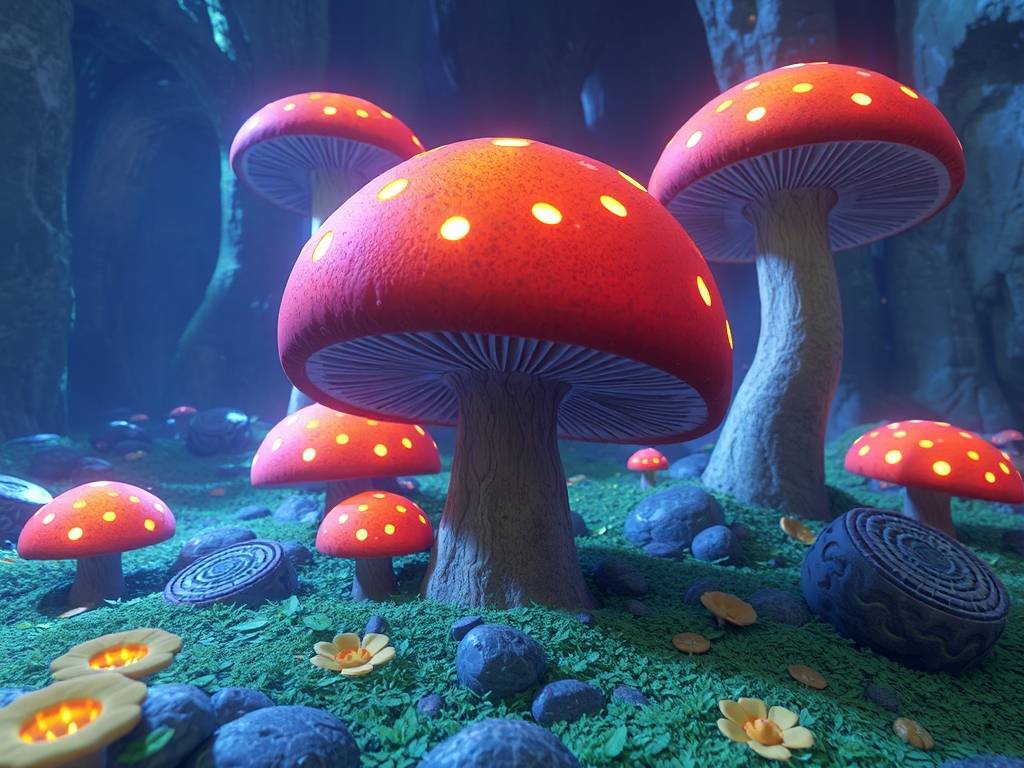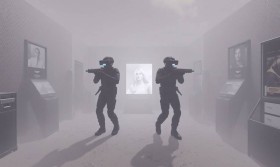Mycelium Unleashed: A Deep Dive into the 'Growth Missions' Update for Fungus Simulator VR
The virtual reality landscape is one often dominated by the familiar: the sharp report of gunfire, the graceful arc of a lightsaber, or the bustling life of a social hub. Yet, nestled within this ecosystem of human-centric experiences lies a title that dares to be different, to be quiet, to be fundamentally other. Fungus Simulator VR, since its inception, has offered a meditative journey into the life of a mycelial network, and with its latest 'Growth Missions' update, it has transformed from a captivating tech demo into a profound and purposeful game.
For the uninitiated, Fungus Simulator VR places you in the... well, the mycelium of a fungus. Your world is the soil, a dark, particulate, and strangely beautiful subterranean realm. You grow by extending hyphal tips, absorbing nutrients from decaying matter, and navigating a world of roots, stones, and hidden dangers. It’s a synesthetic experience; you feel the subtle vibrations of a nearby earthworm, hear the drip of water as a low thrum, and see the world through a filter of bioluminescent wonder. The core loop was always satisfying—a digital form of gardening that appealed to our innate desire for expansion and connection.

The 'Growth Missions' update, however, provides the crucial element this world was missing: context.

From Aimless Growth to Purposeful Propagation
Previously, your growth was its own reward. Now, the fungal consciousness you embody has clear, compelling objectives. These 'Growth Missions' are seamlessly integrated into the environment, communicated not through text boxes, but through environmental cues and instinctual drives.
One of the first missions you might encounter is "The Symbiotic Awakening." Your mycelial network discovers the struggling root system of a young sapling. The mission isn't explicitly stated; instead, you feel a faint, rhythmic "pulse" of distress emanating from the root tips. As you guide your hyphae to gently envelop them, a new UI element—a subtle, glowing bar—indicates the formation of a mycorrhizal network. You are no longer just consuming; you are collaborating. The satisfaction of seeing the sapling's health bar (represented by its vibrancy) fill up as you provide it with water and nitrogen is immense. In return, it feeds you precious sugars, a resource far more potent than the ambient nutrients in the soil. This mission teaches players the foundational real-world biology of fungal-plant relationships in the most engaging way possible: through direct, tactile interaction.
Another standout mission type is "Defend the Fruiting Body." Your primary goal as a fungus is to reproduce, and that means producing mushrooms. The update introduces a host of new, VR-native threats to this process. A swarm of hyper-aggressive bacteria, represented as shimmering, corrosive clouds, can eat away at your carefully cultivated mycelial highways. Fungus-eating insects, which appear as colossal, terrifying beasts from your microscopic perspective, will attempt to devour your nascent mushroom before it can release its spores.
The combat—if it can be called that—is brilliantly unconventional. You don't wield a weapon. You are the weapon. You can rapidly grow specialized, thorn-like hyphae to impale bacterial swarms. You can secrete defensive enzymes that create a sticky, slowing barrier. For the larger insects, you must think tactically, growing robust, fibrous nets to entangle their legs or leading them into patches of toxic mold you've cultivated elsewhere. It’s a defensive strategy game played from a first-person, embodied perspective, and it is utterly thrilling.
New Environments and Deeper Systems
The missions are spread across three stunning new biomes, each with its own unique resources, challenges, and aesthetic.
- The Verdant Forest Floor: This is the most resource-rich environment, teeming with decaying leaves and cooperative plant roots, but it's also home to the most diverse array of pests and competing fungi.
- The Arid Desert Soil: A stark, beautiful, and challenging landscape. Nutrients are scarce, water is a precious commodity found in deep, hidden pockets, and the missions here focus on survival and extreme efficiency, such as the "Oasis Reclamation" mission where you must connect to a distant, dying cactus.
- The Post-Fire Regrowth Zone: A haunting, ashen world charged with charcoal. This biome introduces a new "Phoenix Spore" mechanic, where your growth is initially slow but can be supercharged by absorbing the unique nutrients left by a forest fire, leading to explosive, vibrant regrowth missions.
The progression system has been completely overhauled. As you complete missions, you earn "Evolution Points." These can be spent in a new skill tree to unlock specialized growth patterns. Do you invest in the "Rapid Hyphae" branch to outpace competitors and threats? Or the "Toxic Synthesis" path to become a walking defense mechanism? Perhaps the "Deep Root Connection" line is more your style, allowing you to form stronger, more rewarding bonds with larger trees. This RPG-like layer adds a tremendous amount of replayability, encouraging players to experiment with different fungal "builds."
The VR Difference: A Truly Embodied Experience
It’s crucial to emphasize that this update is built from the ground up for virtual reality. The sense of scale is everything. Looking up to see a pill bug the size of a minivan, its segmented armor creaking as it moves, is humbling. The act of physically reaching out with your VR controllers to guide a hyphal tip around an obstacle is an intuitive and deeply immersive action that a flat-screen game could never replicate. The new haptic feedback patterns for different interactions—a gentle buzz for nutrient absorption, a sharp pulse for taking damage—further cement you in this alien world.
The 'Growth Missions' update for Fungus Simulator VR is more than just a content drop; it's a statement. It proves that games can be peaceful yet challenging, educational yet exhilarating, and utterly alien yet profoundly relatable. It turns the player from a passive observer of a natural process into an active, intelligent force within an ecosystem. By giving our fungal existence purpose, the developers haven't just added missions; they've given us a reason to care, to fight, to connect, and to truly feel what it means to be part of the web of life, one virtual spore at a time.


















